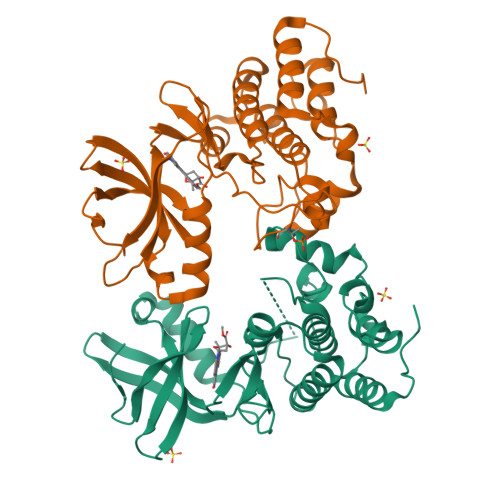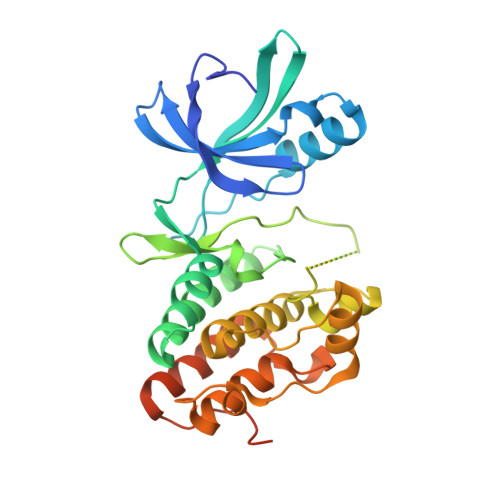Auto-activation mechanism of the Mycobacterium tuberculosis PknB receptor Ser/Thr kinase.
Mieczkowski, C., Iavarone, A.T., Alber, T.(2008) EMBO J 27: 3186-3197
- PubMed: 19008858
- DOI: https://doi.org/10.1038/emboj.2008.236
- Primary Citation of Related Structures:
3F61, 3F69 - PubMed Abstract:
Many Ser/Thr protein kinases are activated by autophosphorylation, but the mechanism of this process has not been defined. We determined the crystal structure of a mutant of the Ser/Thr kinase domain (KD) of the mycobacterial sensor kinase PknB in complex with an ATP competitive inhibitor and discovered features consistent with an activation complex. The complex formed an asymmetric dimer, with the G helix and the ordered activation loop of one KD in contact with the G helix of the other. The activation loop of this putative 'substrate' KD was disordered, with the ends positioned at the entrance to the partner KD active site. Single amino-acid substitutions in the G-helix interface reduced activation-loop phosphorylation, and multiple replacements abolished KD phosphorylation and kinase activation. Phosphorylation of an inactive mutant KD was reduced by G-helix substitutions in both active and inactive KDs, as predicted by the idea that the asymmetric dimer mimics a trans-autophosphorylation complex. These results support a model in which a structurally and functionally asymmetric, 'front-to-front' association mediates autophosphorylation of PknB and homologous kinases.
Organizational Affiliation:
Department of Molecular and Cell Biology, University of California, Berkeley, CA 94720-3220, USA.





















